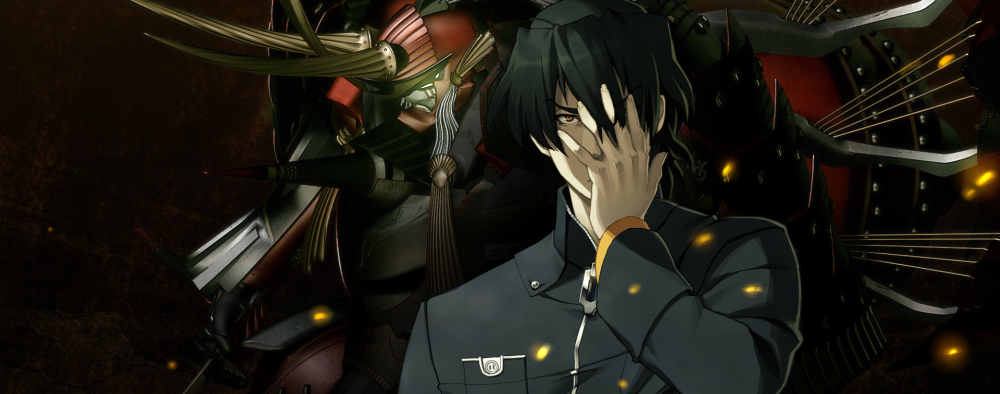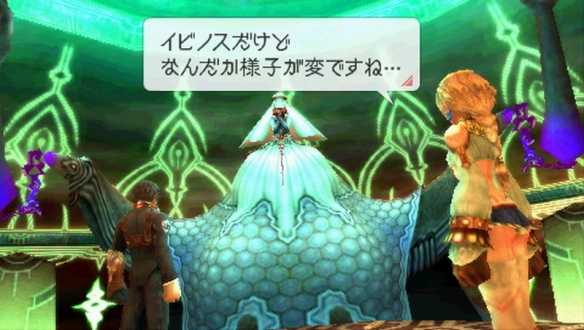JP title: ラストランカー
Well that was a pleasant surprise.
You might remember that I gave my initial impressions on the game a couple of months back (so please read that first if you haven’t already, since I won’t go over everything again), based on roughly 15 hours of playtime, which was more or less the first half of the story. I promised I’d do a follow-up post if I ever finished the game in its entirety, so here I am, with my additional thoughts and final verdict on Last Ranker for the PSP.
I already went into an explanation of the battle system, so let’s not recap that. What changes in the later half of the game is the general difficulty, which, although still not insanely challenging, ramps up a little bit. There are a few tougher boss battles during the grand finale that require some preparation in terms of skills, and even mid-battle you have to bring your A game in order to succeed: buffs, Breaking, well-timed counters and blocking, the list could go on. And even then there were a few battles here and there that I just barely survived by the skin of my teeth.
The bottom line is that while the majority of the game was still fairly easy, and the final boss itself was kind of a joke, a few of the Ranker battles were really, really satisfying. And like I said in my previous post, the battle system itself is just really addictive and well-put together, so the only time I felt a bit bored was during random encounters, but thankfully those are over fairly quick.
The upgrade system gains a bit more depth later on as more and more skill gems are introduced. If you remember, the upgrade system basically consisted of a chess board sort of thing with sockets, where you arrange your skills by inserting them into the individual sockets. Some gems give you extra battle skills, others provide you with passive bonuses and so on; there are also gems that influence other gems in their vicinity (example: +damage against humans for the neighboring skill gem), so in this way, their placement on the skill board becomes a bit more meaningful, and you can actually do a fair bit of customization if you so desire.
I’ve mentioned the presence of various combat Styles, such as dual-wielding swords, gunplay, sword and shield, etc. Unfortunately, my initial complaints remain *mostly* unchanged – with a select few exceptions, you can pretty much win the entire game with the same strategy: using Break Style, deplete the enemy’s Break gauge until he’s stunned, then unleash your best offensive skill for massive damage. Repeat the process until you win. The gun-wielding Style in particular felt pointless to me – in fact, I never used it during the entire game. I simply didn’t need to.
Now, there are a few very pleasant exceptions: some enemy Rankers will have counters of their own, making it hard to approach them with melee attacks; others cast “seal” debuff spells on you that make you unable to use R skills or certain buttons (in other words, you’re kinda screwed), and so on. For one battle in particular, I even had to switch up my strategy a bit and use the defensive sword-and-shield style for more protection. So there’s some variety, which is great, but it doesn’t happen too often. For the most part I was doing the same old routine based on Breaking and countering, and healing when required. And yet, I’d still call the battle system a success, since many JRPGs don’t even offer this level of depth or sheer fun, so don’t let this paragraph discourage you.
Quests don’t change much throughout the entire game. They’re mostly either fetch quests or “go here and kill this monster” contracts, with only a handful of exceptions that make you do something outside your comfort zone. By the end they felt more like padding, like the developers wanted to make sure that the main story doesn’t progress *too* fast.
Friendship Events (in Persona terms: social links) become more fun when you actually gain access to some of the iconic characters like Ren or Igorida. The events themselves are still painfully short, but at least they’re there. And yes, they can only be done in a certain time period of the story, so if you progress the plot too fast you might miss a couple, which is a bummer.
And now we come to the most noticeable improvement: story and characters. My major gripe during the impressions post was the lack of any story or character development during the first half of the game. This changes in the second half, to the point that I almost felt like I was playing a different game altogether. Sure, the story is the very definition of a JRPG cliché and the characters aren’t super complex or anything, but they’re all presented reasonably well.
Even the main cast, despite not doing much during the first 15 hours, actually get a decent amount of screen time and develop some level of chemistry between each other. There’s even very mild hints of romance thrown in there at the end, which is something I really wasn’t expecting from this game, but it all turned out quite nicely. So by the time it came to the final showdown, the main cast has really started to grow on me, and the post-credits epilogue scene was such a heartwarming display of pure bromance that it made even me smile.
Final verdict
In closing, Last Ranker does start slow with a fairly bland first couple of hours, the only thing really present to stop you from playing at that point being the addictive battle system and unique atmosphere. However, in its later half, with all its corny scenes and clichés, it still manages to develop a heart of its own, with a decent main cast and a satisfying, albeit predictable finale. I’m not saying it’s the best JRPG ever or anything, but overall it’s a reasonably fun title in the PSP library that just might win you over if you can look past its slow beginnings. It was most definitely a pleasant experience for me, shortcomings aside.






Nice review and blog! I also enjoyed the game as well and thought it was a lot of fun.
Whoops, I must’ve missed this comment, because it’s actually nice to see someone else who also played and enjoyed this game. Shame it was never localized in the west, though.
I played a partially translated english version of the game, and I absolutely loved it. It is rare to see anyone else who has heard of it. If you played it through in Japanese, I have one question about it. When you finish the game and go back to the arena, there is a woman in red at the desk. When you talk to her, there is a bunch of text, and then a screen where you can type in something shows up. This part wasn’t translated, and I was wondering if you had any idea as to what the purpose of this is.
I did play the game in Japanese but it’s been so many years that I honestly didn’t remember that part. Anyway, after a quick search on Gamefaqs, I think I figured it out. They seem to be bonus battles you can unlock by inputting codes. Check out this FAQ and search for “Ring Name Code”: https://gamefaqs.gamespot.com/psp/974876-last-ranker/faqs/61028
Those are the codes you need, I believe.
Oh woops, so it’s one of those offline codes like valkyria chronicles 2 eh? The in-game text definitely didn’t explain it well.
I had a clear file so took a look at it’s just for putting nickname of who you want to challenge.
Also, check out my blog too!
http://jhipst3r.blogspot.com/2016/02/last-ranker.html
https://ibb.co/mWk878
Thank you so much for the help. I loved that game. Ah… Norma…<3